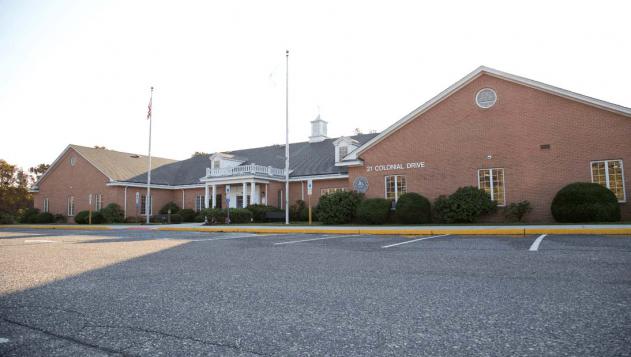Lakehurst History
Lakehurst began in 1821 when Samuel Whittemore gave one square mile of land, or 640 acres, to his daughter, Adeline, and her husband, William Torrey. Torrey mapped the tract of land while Adeline named most of the streets after trees. Lakehurst was part of Manchester Township until it became the Borough of Lakehurst in 1921. The Lakehurst Naval Air Station was also officially established in 1921.
The area rose as an industrial center during and following the Revolutionary War. It was the site of Federal Forge, a major producer of iron products, including cannon balls for Washington’s troops.
In the late nineteenth and early twentieth centuries, Lakehurst’s major industry was a rope mill. The rope mill was powered by an elaborate water flume, which ran underground from nearby Lake Horicon to the factory. The rope mill burned down in 1911.
Old Saint John’s Church was built in 1874. It was Ocean County’s first Roman Catholic Church. Today, the church is the home of the Lakehurst Historical Museum.
In the 1930s, the United States Navy conducted its “Lighter than Air” Program. The Navy’s rigid airships peaked with the construction of enormous lighter than air vehicles that served as the eyes of the fleet. Some of the largest airships were launched from the base at Lakehurst, which is also home of the nation’s first international airport. On May 6, 1937, Lakehurst became internationally famous as “The Airship Capital of the World” when the Hindenburg exploded and burned while attempting to land. The Hindenburg was a rigid hydrogen airship built by a firm in Germany. Completed and tested in 1936, it was the world’s first transatlantic commercial airliner. The zeppelin held more than seventy passengers and boasted a library, a dining room, and a lounge. Thirty five passengers and crew members perished when the hydrogen gas ignited. Visitors to Lakehurst can still see Hangar One, a National Historic Landmark, where the Hindenburg was docked.
Until the 1940s, Lakehurst was the site of one of the Central Railroad of New Jersey’s roundhouses for servicing trains. From 1897 to 1973, the luxurious Blue Comet train stopped at Lakehurst delivering passengers to the Pine Tree Inn, which is where the Lakehurst Elementary School now is.
Manchester History
Manchester came into existence as a municipality when the state legislature created it from 34,000 acres of Dover Township land on April 6, 1865. A New York banker, who was part of a group of English merchants that purchased the acreage from Monmouth County in 1841, originated from Manchester, England. The township was named after Manchester, England because of this New York banker and the role that he played. Another New Yorker, William “King of the Pines” Torrey, was the most influential in the development of Manchester Township. Important enterprises during this early period included charcoal, lumber, and railroading.
The greatest surge in population came with the post-World War II migration to the suburbs, which brought an influx of senior citizens to Ocean County. After 1965, Manchester Township started attracting the development of adult communities such as Leisure Village West, Leisure Knoll, and Crestwood Village. Manchester Township’s extensive retirement communities made the Township one of the fastest growing communities in New Jersey from 1965 to 1988. The original 1865 population of 1,084 people climbed to 43,070 people according to the 2010 Census.



